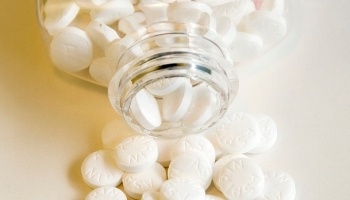 According to a new report from Irish research company GMR Data, the global healthcare packaging market will grow to $262bn by 2028, rising from $117.2bn across 2018.
According to a new report from Irish research company GMR Data, the global healthcare packaging market will grow to $262bn by 2028, rising from $117.2bn across 2018.
What Is Driving This Growth?
Key growth drivers for the global healthcare packaging market are the same factors that drive the pharmaceutical sector generally: a growing global population and increased access to health care and prescription / OTC drugs in developing countries.
This is alongside key drivers of growth specific to the global healthcare packaging market: primarily non-adherence driven development — which entails various compliance packaging and track-and-trace packaging.
For example, the (US) FDA is moving towards all pharmaceutical companies selling drugs in the US be compliant with serialization regulations. Counterfeit drugs represent an estimated 10% of all medications in the US, according to the FDA. Therefore, such serialization-compliant anti-counterfeit packaging market will be significant in the US across the forecast period 2018-2028.
Drug and device manufacturers are also increasingly demanding incorporation of Electronic Data Capture (EDC) or Near Field Communication (NFC) tags/software on the primary packaging itself. EDC/NFC technologies enable manufacturers to collect usage pattern/data on end-users/patients in almost “real-time.” Previously, data was passed backwards through the supply chain via a third party or not at all.
Other healthcare packaging market drivers include, for example, the French government’s intent to tackle the problem of medicines wastage by promoting unit-dose dispensing and improved medicines management. Unit-dose packaging is seen to be increasingly popular both in the US and Europe — a leading supplier is Unither, based in France.
Consumption Patterns in Healthcare Packaging
The healthcare packaging market has different consumption patterns by geography; for instance, European markets favour blister packs for solid oral forms, as opposed to bottles; whereas bottles are more prevalent in the US.
Emerging pharmaceutical markets are the largest consumers of generic drugs. During the next five years, in the region of $106bn in spending is expected to shift to generic drugs — typically packed in blister packs.
Potential restraints of the global healthcare packaging market include:
- Unfavourable economics
- Challenging regulations for newer healthcare products
- Challenges in development of packaging material for newer healthcare products
Such challenging regulations in respect to packaging deter many companies from developing and commercialising newer healthcare products — and therefore hinder growth of the packaging market.
Newer healthcare products such as drug-device combination products, biologics, and tissue products such as xenografts, allografts, and stem cell products require packaging material that can withstand shipping and storage conditions yet maintain the integrity of the fragile products and the terminal sterilisation implemented. Despite growing demand for such products, currently there exists a gap in suitable packaging material developed.
To understand more about this important global pharmaceutical market, download a sample of GMR Data’s pharmaceutical report The Global Healthcare Packaging Market to 2028.
To access the full report, click the button below.
About the Author: Simeon Pinder is a Senior Analyst at GMR Data Ltd, an independent publisher of business reports covering the pharma, energy, utilities & IT sectors.


